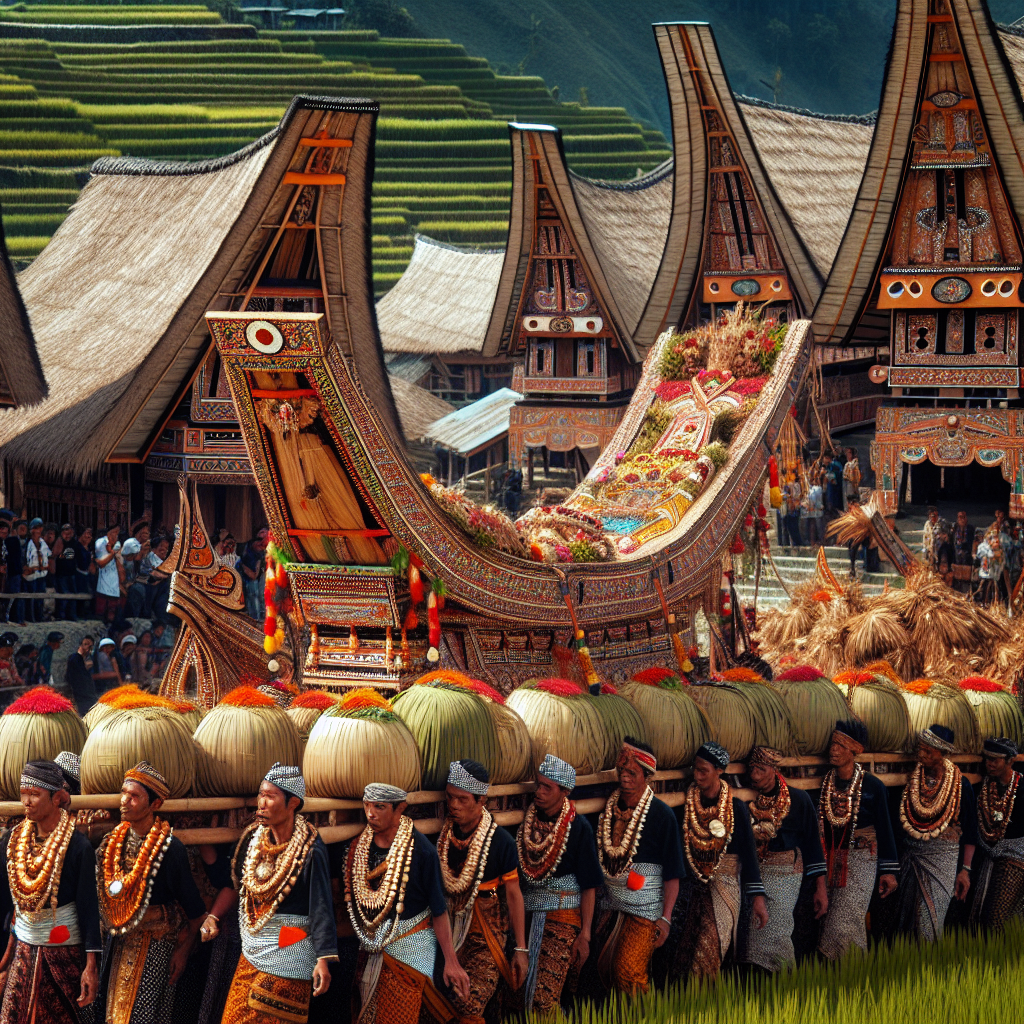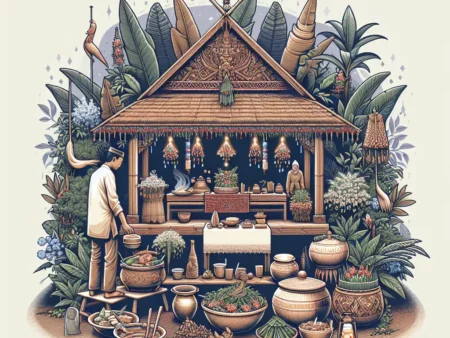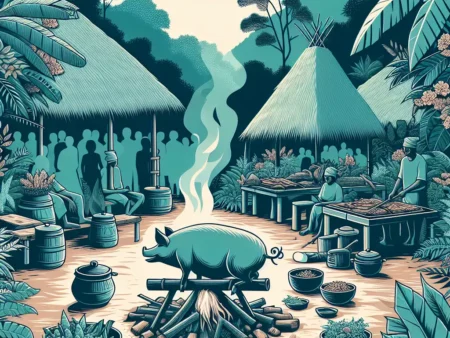Upacara Adat Besar: Ma’nene di Toraja adalah ritual penghormatan kepada leluhur dengan menggali dan memandikan jenazah yang telah meninggal.
Upacara Adat Besar: Ma’nene di Toraja
-
Table of Contents
Introduction

The Toraja people of Indonesia have a rich cultural heritage that is deeply rooted in their traditional beliefs and practices. One of the most fascinating and unique ceremonies they perform is the “Ma’nene” or the “Ceremony of Cleaning Corpses.” This ancient ritual, also known as the “Upacara Adat Besar,” is a way for the Toraja people to honor their deceased loved ones and maintain a connection with their ancestors. In this article, we will explore the significance, history, and cultural aspects of the Ma’nene ceremony in Toraja.
The Significance of Ma’nene
The Ma’nene ceremony holds great importance in Toraja society as it is believed to ensure the well-being of both the living and the dead. According to Toraja beliefs, the soul of a deceased person remains in the village until the body is properly buried. Until then, the deceased is considered to be “sick” and is treated as a member of the family. The Ma’nene ceremony is performed to fulfill the duty of caring for the deceased and to show respect for their presence.
History of Ma’nene
The origins of the Ma’nene ceremony can be traced back to ancient Toraja traditions. It is believed that the practice began centuries ago when a hunter found a decaying corpse in the forest. Filled with grief and compassion, the hunter decided to clean and dress the body before giving it a proper burial. This act of kindness and respect for the dead became the foundation of the Ma’nene ceremony.
The Ritual of Ma’nene
The Ma’nene ceremony takes place once every few years, usually during the dry season. The exact timing is determined by the family and the community, and it often involves a significant amount of preparation. The ceremony begins with the exhumation of the deceased bodies from their graves. The bodies are carefully removed and cleaned by the family members.
After the cleaning process, the bodies are dressed in new clothes and placed in a sitting position. The family members then take the opportunity to spend time with their deceased loved ones, talking to them, and even taking photographs together. This interaction is seen as a way to maintain a connection with the deceased and seek their blessings.
Cultural Aspects of Ma’nene
The Ma’nene ceremony is not just a religious or spiritual practice; it is deeply ingrained in the cultural fabric of the Toraja people. It serves as a way to strengthen family bonds, honor ancestors, and pass down traditions from one generation to another. The ceremony also provides an opportunity for the community to come together and support each other during the grieving process.
Beliefs and Superstitions
The Toraja people have a unique set of beliefs and superstitions associated with the Ma’nene ceremony. They believe that neglecting the deceased can bring misfortune to the family and the community. It is believed that the spirits of the deceased can bring blessings or curses depending on how they are treated. Therefore, the Ma’nene ceremony is seen as a way to ensure the well-being of the living and seek protection from the ancestors.
Art and Craftsmanship
The Ma’nene ceremony also showcases the artistic skills and craftsmanship of the Toraja people. The new clothes worn by the deceased are often intricately woven and adorned with traditional motifs. The coffins used for the reburial are beautifully carved and decorated with symbolic designs. These artistic elements not only add beauty to the ceremony but also reflect the cultural heritage and creativity of the Toraja people.
Controversies and Modern Influences
While the Ma’nene ceremony has been an integral part of Toraja culture for centuries, it has also faced some controversies and modern influences. Some critics argue that the ceremony is a form of ancestor worship and goes against Islamic teachings, which have gained prominence in the region. Additionally, the increasing influence of Western culture has led to changes in the way the ceremony is performed, with some families opting for a more simplified version.
Preservation Efforts
Despite the challenges and controversies, there are ongoing efforts to preserve and promote the Ma’nene ceremony. The Indonesian government recognizes the cultural significance of the ceremony and has taken steps to protect it as intangible cultural heritage. Local communities and organizations also play a crucial role in raising awareness and educating the younger generation about the importance of preserving their cultural traditions.
Tourism and Cultural Exchange
The Ma’nene ceremony has also become a major attraction for tourists from around the world. Visitors are drawn to the unique cultural experience and the opportunity to witness a traditional ceremony that is deeply rooted in history. While tourism has brought economic benefits to the region, it has also raised concerns about the commercialization and exploitation of the ceremony. Striking a balance between preserving cultural authenticity and catering to tourist demands remains a challenge.
Summary
The Ma’nene ceremony in Toraja is a captivating and deeply meaningful tradition that reflects the cultural heritage and beliefs of the Toraja people. It serves as a way to honor the deceased, maintain a connection with ancestors, and strengthen family bonds. Despite facing controversies and modern influences, the ceremony continues to be an integral part of Toraja culture. Efforts to preserve and promote the Ma’nene ceremony are crucial in ensuring that future generations can appreciate and understand the rich cultural heritage of the Toraja people.







